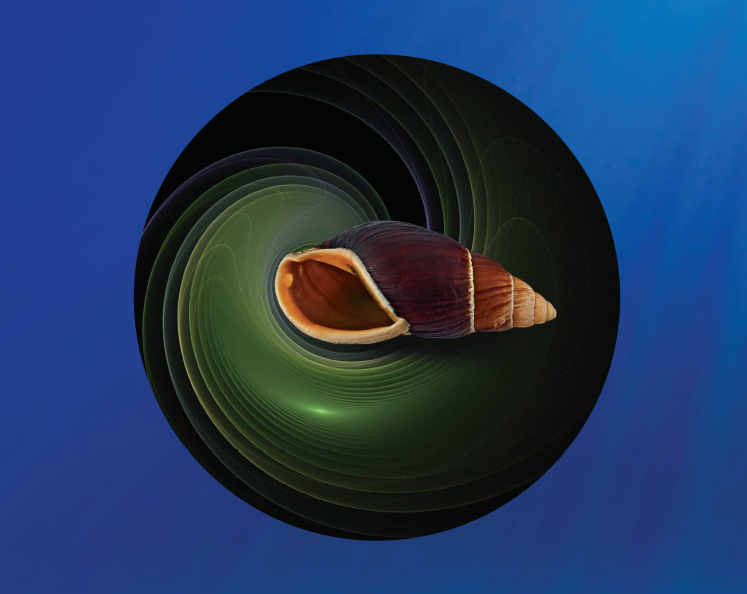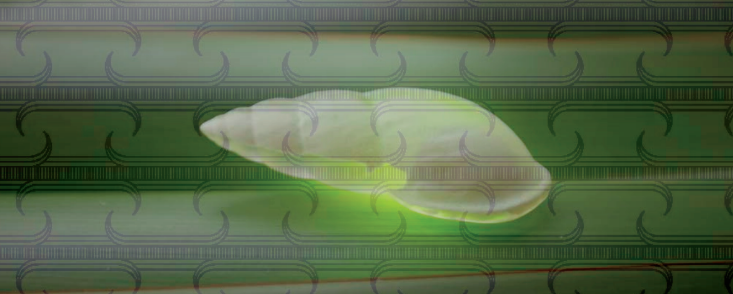Te Mana o Rangitāhua is a five-year (2020-2025) Ministry of...

Pūpūwhakarongo taua (Placostylus ambagiosus) also known as Pūpū Korari or Pūpū Harakeke is a highly endangered tāonga species endemic to te rohe a Ngāti Kuri. Closely related but different pūpū species occur on Manawatāwhi and in southern parts of Northland within the Ngati Wai rohe.
Our Pūpū is a sister to Ngati Wai. It is estimated that fewer than 1,000 mature individuals of pūpūwhakarongo taua (pūpū hereafter) remain alive. How long pūpū can live for is not well known, although it is likely to be 20 or more years.
As with many species in Aotearoa, pūpū live long and reproduce slowly in comparison with similar species in other countries. This is unfortunate when it comes to trying to save these species as it can take a long time to notice a decline in their numbers (if they are failing to breed, for example) or to boost those numbers back up to healthier levels.
Our Pūpū and its survival was the catalyst for Ngāti Kuri Kuia Saana to lead the development of the Wai 262 Claim with its link to Ngāti Kuri identity and wellbeing at the forefront of the agenda. Almost 30 years later this Tāonga is in worse condition.
These are the words from Saana’s grandmother to her and then passed by Saana to her mokopuna. “E Kō, me atawhai tēnei Tāonga, Kaua koe e tukua kia takahia” – “My Girl, look after this Treasure of ours, don’t allow it to be disrespected or desecrated”

The pūpū (flax snail) is held in special regard
by Ngāti Kuri as a guardian. This status is signified by its name – pūpu whakarongotauā, the snail that listens for war parties. The species is now endangered

The ground was still warm when our ancestor Kupe set foot on the land of Muriwhenua, the homeland of the Pūpuharakeke, in Aotearoa. It was the warmth of the virgin land and the flora and fauna that greeted the greatest ocean navigator of all times – Kupe,our ancestor.
“E hara anake na te kaha tangata,
engari na te mana wairua i nukunuku,
i nekeneke ai. Ngā tūpuna i roto i te
kohu o te ao hunga.”
“Not only by strength of man but the
power of faith moved our ancestors
into the mist of the unknown.”
Kupe, the discoverer of Aotearoa, left a message at Te Rerenga Wairua where the oceans met Rehua and Whitirea. The pathways to the world, the ancestral homelands at Tawhiti Nui, Tawhiti Roa, Tawhiti Pāmaomao. Centuries later, our forebears, Pōhurihanga of the waka Kurahaupō, made their first landfall in the area, known today as Takapoukura (North Cape).
When passing the first land sited, Pōhurihanga, the rangatira exclaimed: Ko Muri o te motu (Tis the end of the land).
Ironically, this centuries-old landmark was one of the many land alienations actioned by the Crown for the purposes of a scientific reserve.
The ore of the Māori was the sustenance from nature’s bounty. These boundaries for the Ngāti Kuri tribe include the West Coast, known as Te Oneroa a Tōhē. The Northern coast from Kapowairua, Te Tūranga – waewae o Tōhē and Muriwhenua Tika, Takapoukura.
The scientific reserve, and the traditional dwelling places of our ancestors, including all of what is now known as the Mokaikai scenic reserve and Pārengarenga Harbour. As the sign of continued occupation of these areas by our tribe Ngāti Kuri, the pa’s fertile valleys still echo with their songs and legends. The pūpuharakeke is the taonga and only living link of this era. We have two names for this taonga. During the tribal wars, when the warriors moved through the flax bushes crushing the pūpuharakeke underfoot in their large colonies, a loud piercing wailing was heard.
While dying, the pūpuharakeke were warning our people of the impending danger and death of an attack. Hence the name Pūpū Whakarongotauā – the snail that listens for war parties. The pūpuharakeke is also the kaitiaki of the Paa Harakeke, hence the name pūpuharakeke. Over a thousand years of Māori ancestral occupation – ahi kaa roa, according to our elders who are not
here now, there were large colonies of the pūpuharakeke in the Takapoukura (North Cape) area. Our ancestors treasured these taonga, the pūpuharakeke, as they were there for the survival of the tribe. They were their kaitiaki. We owe our survival to this taonga, and claim rangatiratanga over the pūpuharakeke, as the living link with our Māori ancestors of over a thousand years ago. These kōrero, where passed down to our mother, from her mother, who was the granddaughter of the last fighting chief, who was the first land alienation victim, evicted with his whole tribe, from Whangakea (Pandora), and his mountain Tōku Reo. The scientific reserve laws have for many years excluded, barred and locked out the people of Te Hāpua, the tribe of Ngāti Kuri. Our elders have wept on our marae for these lands because their mana was stripped by foreign laws. They have all passed on to the spiritual world, but their suffering cannot be erased from our memory.
Ko tā te Rino i tuki tuki ai, mā te Rino ano e hanga (What the law has broken, the law will mend). For too long we have been dispossessed of the mana of rangatiratanga.
There are many prophecies by our ancestors. One is the tohu (sign). When the pūteretere (the trumpet seashell) arrives in Pārengarenga Harbour, the ancestors will also come to claim their rightful inheritance.
Usually, around the month of November, the puteretere arrive at the shores of Rangitāhua, Manawa Tawhi, Paua, and Pārengarenga. Their shells are made into trumpets, which are used for ceremonial purposes by Ngāti Kuri.
Support for this project will enable Ngāti Kuri to build a programme of work that sits well beyond the life of this fund, we also believe there are significant opportunities to ensure that indigenous-led conservation measures are recognised within broader policy provisions and settings. The benefits of the research will be multi-layered. For Ngāti Kuri; enabling expression and preservation of ancestral and cultural connections to our Taonga, increasing capacity to strengthen kaitiakitanga, best practice environmental sustainability measures, an ultimate restoration plan for site-specific naturescapes, as well as processes and outputs that reflect Ngāti Kuri visioning into the future are some of the critical benefits. The research centre will increase connection with mātauranga Māori within the context of natural science collections, undertaking a mass stocktake of tāonga, new scientific discoveries, and working with new technologies will highlight the intersections between scientific information and mātauranga will have far-reaching benefits beyond this project work.
We currently host and bring together a range of scholars and world-leading experts across multiple disciplines to undertake research and collaborate to make a difference for our tāonga, our moana, our whenua and our people. We have invested 1.4 million in a Bio Security/Quarantine facility and Helipad to enable us to access our otter island and undertake research and kaitiaki work. We have also relocated a number of buildings for the purpose of a Research Centre and Science Lab and are currently working toward completing the building for opening in time for Matariki.
The Wai 262 report, “Ko Aotearoa Tēnei” defines “tāonga species” as the species over which whānau, hapū or iwi claim kaitiakitanga (guardianship) obligations, and whose basis, history and content are set out in mātauranga Māori. We have held a number of wānanga to support the work Ngāti Kuri has progressed to date to exercise our kaitiaki obligations, and the work of the leaders gone before us. The Wānanga are intended to celebrate the provenance and integrity of the Wai 262. Te Ara Whānui Research Centre hosts an incubator project for Pūpū under Te Puni Kōkiri tuku projects.
Manaaki Whenua and Te puni Kōkiri have supported feasibility to generate an Investment prospectus for this taonga which includes wānanga with key scientists and whānau to:
Resources within Te Ara Whanui research centre for Taitamariki and Tamariki. A number of new projects are emerging and in particular one to explore the impact of severe drought and extreme heat in and around our pupu populations. This work is supported by Manaaki Whenua and aligns to the ‘Taiao’ research ara.
1. Understanding where we are with this taonga for protection and restoration
2.Developing a breeding programme in captivity for release into wild to boost numbers and increase survival of species
3. Plan and costs associated with reinforcing and predator proofing existing populations and costs associated with new areas to translocate or release from breeding programme.
4. Engaging with crown agencies, researchers and experts to establish Iwi protection mechanism for this Tāonga
5. Dissemination and engagement ideas within Te Ara Whānui research centre for Taitamariki and Tamariki
Kaitiaki ,4th Gen
Kauri Ora Lead
Kaumātua and Senior Advisor
Taiao Lead
Kairangahau, Plant Pethology
Kaitiaki/Kaimahi i te rohe
Research Assistant/Kaitiaki/4th Gen
Lead Researcher, Senior Advisor
Kaitiaki
Director Palaeogenetics, Senior Lecturer Ancient DNA
Research Leader
Evolutionary Biologist
Research on Sanctuary areas
Breeding/Captivity Researcher, Snail Expert


This project will develop a restoration and repatriation plan for...
COPYRIGHT 2022 | POWERED BY WORDPRESS | BUILT BY POU DIGITAL